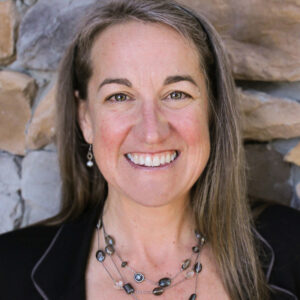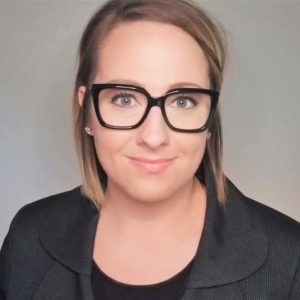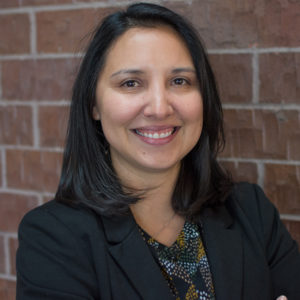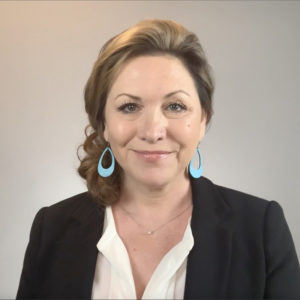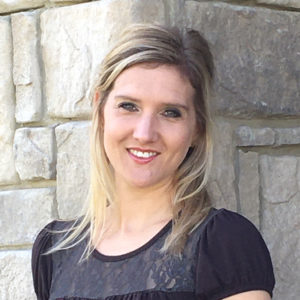HEA PracticeAdvantage Can Accelerate Your Growth, Complement Other HEA Benefits
HEA PracticeAdvantage is a broad-based program designed to help independent eye care professionals become better business owners. PracticeAdvantage provides a multiphase membership that includes an initial 12-month term, with automatic continuation thereafter to facilitate the practice’s continued growth and evolution.
Here are some of the unique program features:
- Assigned PracticeAdvantage Coach who holds a monthly strategic planning session with you.
- Unlimited interim coaching consultations on an on-demand basis, Monday through Friday, 8 am to 5 pm CST online learning library with a customized curriculum for each staff member
- Proprietary Optometric Success Center Learning (OSCL) online platform
- 10 online learning library licenses per registration
- Downloadable tools to help you manage and grow your practice
- Live group coaching sessions facilitated by a PracticeAdvantage Trainer to ensure staff successfully grasp concepts
* Additional consulting services are also available to HEA members at a reduced fee.
Make more of your HEA membership benefits, too, as HEA PracticeAdvantage coaches can provide guided support and coordinate with your HEA Solutions Specialist in leveraging all HEA program benefits, such as regular business reviews to ensure optimal utilization of HEA’s industry-leading discounts on all product and service categories, consolidated billing, SmartData Solution practice analytics dashboard, Practice Boosters to aid with practice expansion and diversification, and The Coding Coach billing and coding toolkit to aid in optimizing medical revenue.
How PracticeAdvantage Helped A New Owner Get The Right Start
An ophthalmologist whom Paige Stephens, OD, met fairly recently made her an offer too good to refuse. As he began contemplating his retirement, he wanted her to take over the optometry business that was operating in his ophthalmology practice in Highlands Ranch, Colorado.
For the 2017 graduate of Pacific University College of Optometry, this was quite a career leap. After her graduation, Dr. Stephens completed a residency at the Veterans Administration in Albuquerque and then landed in a private optometry practice in the Denver area where she worked for two years. She met the MD, and he “gave me an offer I wasn’t expecting. I hadn’t actually been looking for it,” she says. But in October 2020, shortly after their meeting, she became the owner.
In her new role, she was “figuring things out on the fly” when it came to hiring, implementing protocols and purchasing clinical supplies. The optical is owned by a third party. “I figured out that I needed a buying group,” she says, and soon learned that Healthy Eyes Advantage offered her so much more than savings. It offered her connections to organizations that were able to help her get up and running more quickly. Indeed, Dr. Stephens joined the HEA National Advisory Board as its newest member, bringing the perspective of a new OD owner to the group.
She sought consulting help through HEA’s PracticeAdvantage program, seeking input on everything from insurance and credentialing questions to equipment purchases and how to set up a practice to attract medical patients.
“I was making big decisions right off the bat, so I appreciated the ability to lean on PracticeAdvantage as my advisor in getting things set up,” she says.
No time to learn from mistakes
The school of hard knocks teaches some very expensive lessons, and Dr. Stephens was hoping to avoid those. “I wanted to get to the most credible information as quickly as possible. We do learn from our mistakes, but I’d prefer to absorb as much knowledge from people with experience who can help me avoid missteps,” she says. “I have not been shy about asking for help.”
PracticeAdvantage was able to help her right from the start. For example, Dr. Stephens has a real passion for older patients and those with medical needs. But the practice had been scheduling patients every 30 minutes so that tradition needed to change. “Scheduling and billing were not things I had had responsibility for, but my PracticeAdvantage coach helped me with set up and marketing so that I am now running an efficient practice.”
Another benefit she immediately began using was the online learning center. “I have employees that were with the practice when I acquired it as well as new hires, and I have everyone enrolled in the learning center. They’re all doing the modules on how to bill and code correctly,” she says, creating a level set of skills for every member of the staff.
The learning modules have also allowed her to hire staff members for their personality and commitment. “I have brand new, green employees who never worked in eye care, and they’re learning how to be technicians and work up a patient. It’s been such a great wealth of knowledge for me,” she says.
How PracticeAdvatage Consultants Helped Modernize an Established Practice
Since Dr. Ashley Lamm David began working with consulting coaches in 2017, her practice has seen 29.7 percent income growth (not including Cares Act funds in 2020) and 29.8 percent growth in receipts per exam.
Ashley Lamm David, OD, knew a lot about the practice she was buying into in San Angelo, Texas. Her father had started it in this rural west Texas town of 120,000 people. “I came home 15 years ago to join the practice, and I started taking on more of an administrative role,” she says. Many things needed updating, from charts to billing procedures and HIPAA manuals. “It had been run a certain way for 30 years,” she says.
In 2014, she bought her father out entirely and became the sole owner. She began making plans to hit growth benchmarks, which included the construction of a new, larger space. “The old practice was a 2,000-square foot, three-exam room office, and it was very inefficient. The new office is 6,000 square feet, with more exam lanes and a pretesting room,” she says.
Dr. David had begun consulting with the Williams Group in 2017, in preparation for making the process and transition go as smoothly as possible. Of course, no one anticipated COVID-19. “Navigating a two-month shutdown was very humbling,” she says, but she heeded the advice that her father had always counseled: “Do the work, take good care of patients, and good things will happen.”
Her coach at Williams Group provided her a broad perspective, too. “I only know my practice; I don’t have a visual outside of that,” she says. Without a broader perspective, she found herself second-guessing whether she was doing all she could.
“I hold my employees accountable and can track that through training and meetings, but no one holds me accountable. I was up for growing and learning,” she says. “I was eager to leverage the best ideas out there to achieve the goals I wanted.”
Clinical experts
“Many of us who went into optometry also had science undergraduate backgrounds. But we have to wear a completely different hat to run a business and manage personalities,” she says. She was committed to making her practice a success but transferring that vision to the rest of the team was harder. “How do I get employees and even patients to love this practice the way I do?”
She identified some opportunities right away. “I hadn’t really spent time in my dad’s practice since I was in high school, and even though he was a great clinician, I quickly found that we needed to move the practice into modern times with respect to quality measures, coding, billing, and staff training.”
With many of these issues, Dr. David was beyond her comfort zone. “From being involved with the state board, I knew how important it is to pick the right mentors and know the questions to ask,” she says. Her business coach provided many of the answers she needed.
For example, the patient schedule could be feast or famine. It often seemed that staff wasn’t filling in for cancellations, even though the practice was booked two or three months out. Some confirmation that each person on the staff has responsibilities that overlap and impact the patient experience was a start. “From the front desk to technicians, everyone in the office has an equal role in ensuring a steady flow of patients to improve practice operations,” Dr. David says. Medical technicians also began pre-appointing patients, which also helps create a more consistent flow. The result is a more predictable, balanced daily schedule, avoiding the extremes in scheduling that the practice had before.
“Let’s try it”
Navigating staff challenges with two doctors and 17 support staff required some encouragement to those who worried about implementing change. But Dr. David took the lead, telling her team, “If we implement something new, evaluate it and determine it’s not working for us, we’ll move on. Just because we bring on a new idea doesn’t mean that it’s the rule from here on.”
Changes, tracking programs and holding themselves and each other accountable are part of the hour-long staff meeting held every Wednesday morning. “We talk about how to streamline tasks so that it’s easier for everyone on the team,” she says.
Similarly, some of the longer-term staff wondered why they needed to take courses through the online training center. “I encourage staff to look for the pearls, just like I do when I go to CE. I may already know much of the material, but I’m listening to hear how it can be implemented in my practice,” she says. Hearing her approach has made them more open-minded to identifying time-savings versus simply checking the box that they’ve done the training.
She has also encouraged her staff members to observe one another and learn from each other. “I’ll tell the medical technicians if they have downtime to go stand in the front office. See and learn how we pull insurance and how we schedule. Let’s figure out how we can save our teammates because we succeed or fail together.”
A consultant and a booster
Dr. David works to validate the good work that the staff is doing, recognizing that pay and benefits are important to them, but so is the feeling of being valued. As the owner, she needs a little of that herself. “During the shutdown, there was such comfort in knowing that I had someone to confide in and talk with [coach Bess Ogden]. It’s easy to feel alone, and she often reassured me,” she adds.
It’s been helpful relying on Ogden’s experienced eye in terms of practice benchmarks and ongoing commitment to the practice’s goals. “I’m netting more out of my practice. Before, whatever was left over after I paid the bills was my pay. But she has given me benchmarks for spending in categories so that we can budget everything more carefully,” she says. Even a simple step such as creating a budget can make it easier to plan.
Dr. David says that she’s also grateful for someone who has a keen interest in her practice’s success. “When I’m fortunate enough to be busy, I spend my whole day in front of patients. So the challenge with staff training is keeping them on the same page. An hour-long meeting once a week is not enough,” she says. Now she can ensure that her staff is cross trained – without having to develop those materials. When an employee asks for something that isn’t stipulated in the contract or manual – say, restructuring the bonus incentive -- Dr. David has a reliable source she can go to with her ideas.
She credits her relationship with her coach as a key factor in why she’s hitting her practice goals on time or early – even with the COVID slowdown.
How PracticeAdvantage Consultants Helped Turn A Practice Around
Evan Bragg, OD, was facing a terrible moment in the Wynnewood, Oklahoma, a practice he had owned for nearly 30 years and had worked in for 35 years. Serious problems with some personnel were forcing him to take out $20,000 loans every few months for operating capital. The situation was dire when he brought in Williams Group to help rectify the situation.
“We knew we needed help, but we didn’t know how serious the problems were,” he says. The good news is that Williams Group was able to help with everything from investigating the source of the problem, removing the people who were at the root of that problem, and rehiring and training staff who were dedicated to helping the practice succeed.
Dr. Bragg says his new manager is fabulous – smiling, committed to patients and caring about the practice. Williams Group worked with billing staff so that bills went out correctly, rejected claims were refiled promptly, and payments were posted correctly.
They even showed him how effective his prescribing from the chair was. “Having the doctor and the optical in agreement means that our per-patient sales are higher. Most of the time, when I prescribe an upgrade in the exam room, the opticians can make that sale.”
That’s not to say it was easy, but the results have been impressive. The practice made the transition to electronic health records, something Dr. Bragg had wanted to do for a long time but didn’t feel he could afford. He has also brought in an OCT, another long-hoped-for addition. Recently, the practice began using a patient engagement platform to send automated reminders and messages to patients, further freeing up staff time.
With those changes, and by training technicians to be scribes, the exams and charts go more quickly, leading to faster billing and reimbursement. “Some of it has been a matter of me letting go of the details,” he says. He still reviews plans and purchases, but the bank account balance shows him that the problems that plagued him are gone. He has added three patient days per month in his main office to accommodate the increase in patient flow.
As an illustration of how impressive the financial results were, consider this: Dr. Bragg did not qualify for the Paycheck Protection Program funding in 2020 because his revenue during this period, which included being closed to routine care for a period, was higher than it was in the same periods in 2019. It was a great relief, he says, not to be constantly worried about the state of the practice. “It’s calmer, more profitable, and more relaxed. And now we’re at a point where the good momentum is accelerating,” he says. It’s difficult to ask for help – but Williams Group assured him that he would have the freedom to choose his direction – and they have delivered on their promises to help him train the staff and grow the practice.
 800.676.9076
800.676.9076
